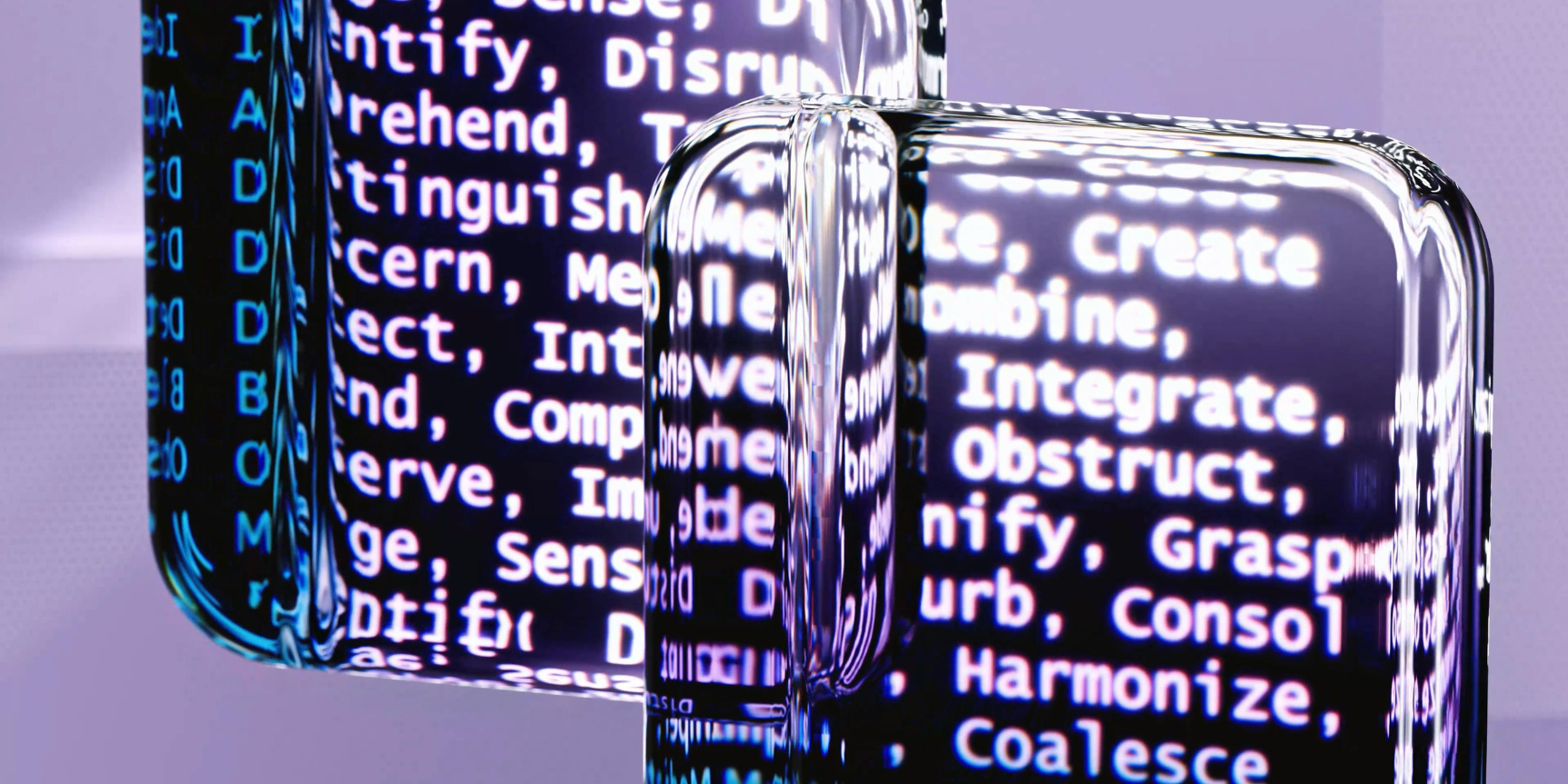Software used to be linear. Once upon a time, technologists would write code, test it, then ship it. But today, with AI in the loop, developers are no longer just building systems, they're shaping them. Output is faster, iteration is messier, and the fundamental role of engineering is shifting.
There's an emerging, creative layer in software development that's less procedural and more collaborative. This is vibe coding, and it's become a reality for organizations that treat AI as a force multiplier rather than a threat to engineering craft.
Programming by Feel
Andrej Karpathy (co-founder of OpenAI, former head of AI at Tesla), noticed this evolving trend early in 2025: “There’s a new kind of coding I call ‘vibe coding’, where you fully give in to the vibes, embrace exponentials, and forget that the code even exists.”
With tools like GitHub Copilot, Cursor, and Amazon CodeWhisperer, developers aren’t always writing logic from scratch. Rather, they’re suggesting direction, nudging a model, describing what they want and refining what comes back.
A technologist might not know the final solution when you start, but they just know the shape of it. And that’s enough for them to get going.
This mode of working favors speed, ambiguity tolerance, and quick judgment. It also requires a totally different relationship to the codebase, one where not everything is written by hand, but everything still needs to make sense.
These skills, including clarity, judgment, responsiveness, are classic human strengths. Vibe coding builds them. It trains developers to reason across layers, zoom out from implementation, and get comfortable with creative ambiguity.
The New Development Interface
Platforms like Cursor are reshaping the development interface to be intent-first, not code-first. The takeaway for tech leaders is that the tools their developers use will increasingly resemble orchestration surfaces, not text editors, and their teams need to be fluent in this new mode of collaboration.
Codeium and Github (with Copilot) are building workflows where coding happens through collaborative prompting, not individual line-writing. Meanwhile, enterprise players like Microsoft, Salesforce, and Adobe are experimenting with integrating AI co-creation layers into developer tools.
These aren't merely AI add-ons, rather they're foundational shifts. The "prompt bar" is becoming as important as the terminal. Technical leaders are rethinking the whole developer experience, from IDE to implementation.
Why Everyone Thinks They Can Vibe Code Now
There's a growing belief that vibe coding is a shortcut to software creation. After all, AI can spit out thousands of lines of functional code in seconds. Articles like "Anybody Can Vibe Code a Startup Now" reinforce the idea that building software is suddenly easy, accessible, and democratized. Real-world examples like Giggles, a Gen Z-focused social app with 150M impressions and no traditional engineering team, and Base44, a no-code AI startup acquired by Wix for $80M, are fueling that perception, showing what’s possible when creativity and AI replace legacy software pipelines.
But that narrative is dangerously incomplete. Vibe coding lowers the barrier to starting, not succeeding. The illusion of accessibility obscures the deeper judgment required. AI makes it look easy. But generating a working prototype is not the same as building production-grade software.
For engineering leaders, the real risk isn't developers overtrusting AI, but that organizations risk accumulating technical debt, security gaps, and misaligned systems when they mistake fast output for production-ready value.
Prompting well is hard. While AI assistants can deliver functioning code in seconds, leaders must now ask:
- Can your team identify hallucinated logic and broken dependencies?
- Do you have the review and testing frameworks to validate AI-authored code?
- Are you hiring for critical thinking, not just syntax fluency?
As TechMonitor notes, the rise of vibe coding is pushing enterprises to double down on QA, code review, and intuitive debugging, not let up.
When AI Writes the First Draft
AI models like OpenAI’s GPT-4, Claude, and Mistral models are capable of generating thousands of lines of functioning code. But they’re not engineers, and they’re definitely not decision-makers. Rather, they’re sophisticated pattern matchers. Which means strong prompts matter, but even more important is what happens after the first draft.
Just like traditional coding, quality comes from review, not output alone. But in an AI-first workflow, we’re also reviewing intent, logic, and risk. And we’re doing it faster, with less context, and more ambiguity.
Satya Nadella noted “We are entering a new era where every developer is going to be a copilot.” But copilots don’t replace pilots. The judgment of what to keep, revise, or throw out is still deeply human.
This is where engineering judgment becomes a team-level capability. As AI handles more scaffolding, teams need to develop shared practices around AI code review and prompt review, treating both as new forms of quality gates. Without this, speed can quickly lead to technical debt. The real differentiator in an AI-native team is how well you choose what moves forward.
Writing for Machines First
Prompting is now part of software development. You're not only telling a compiler what to do, you're also guiding a language model. This requires a new kind of clarity, where you communicate high-level intent in a way the AI can latch onto.
Prompting is not only a developer skill, it's something technical and product leaders need to care about, too. As AI becomes part of how we build, test, and ship software, the way we design prompts is starting to shape workflows, QA processes, even platform architecture.
You're not just giving instructions to a model. You're setting the rules for how it thinks, acts, and interacts across your systems. That takes a different kind of clarity, where high-level goals have to be translated into language a machine can actually work with.
As Simon Willison, creator of Datasette and a leading voice on developer-AI workflows, puts it, “Prompt injection is a new kind of software attack, and prompt design is a new kind of software architecture.”
Prompting well is about knowing exactly what you want, and expressing it in a way that AI can follow. It’s part technical skill, part systems thinking, and part self-awareness. Because the better you understand your own thinking, the better your prompts, and your results, will be.
Building the Intuition Stack
Every developer works with a tech stack: tools, frameworks, libraries. But now, there's a second, less visible layer forming, called the intuition stack.
This includes:
- Pattern recognition across architectures
- Judgment around generated output
- Taste for maintainability and scale
- Ability to feel when something's "off," even before it breaks
You don’t learn this from documentation. It’s the result of exposure, reading real systems, debugging weird failures, and building things that last. Technologists with a strong intuition stack thrive in this new environment. They know how to collaborate with AI without surrendering authorship. As Replit CEO Amjad Masad wrote in a recent post,“Prompt literacy will be as important as code literacy.”
Code as Direction, Not Output
To authentically vibe code, you need to use all available tools, human and machine, to move faster and more creatively.
Development becomes more iterative. You sketch, review, adapt. You let the AI scaffold a solution, then reshape it until it feels right. With vibe coding, you're directing the flow, rather than just composing every detail.
Andrej Karpathy noted the necessity for words over code: “The hottest new programming language is English.” This a ‘yes and’ moment, not just a rejection of code, expanding the horizons of what’s possible with programming.
Managing the Transition: Key Implementation Challenges
The shift to AI-assisted development isn't without friction. Just 29% of developers say they feel "very confident" in their ability to detect vulnerabilities in AI-generated code. And Forrester predicts that by 2025, more than 50% of technology decision-makers will face moderate to severe technical debt, with that number expected to hit 75% by 2026.
For tech leaders considering this shift, several implementation challenges require attention:
Security and Code Quality: AI-generated code can introduce vulnerabilities or anti-patterns. Organizations need updated security review processes and automated testing that can catch AI-specific issues like prompt injection vulnerabilities or hallucinated dependencies.
Team Skill Development: The transition requires investment in prompt engineering training and new code review methodologies. Senior developers need time to develop intuition around AI output quality, while junior developers need guidance on when to trust versus verify AI suggestions.
Cultural Adaptation: Teams must overcome the "not invented here" mentality and develop comfort with code they didn't write from scratch. This requires psychological safety for developers to admit when AI-generated code doesn't make sense to them.
Vendor Dependencies: Heavy reliance on AI coding tools creates new vendor lock-in risks. Organizations should develop fallback processes and maintain core coding competencies even as they embrace AI assistance.
Teams That Move Like This
With vibe coding, people can change not only what they build, but how they build. Teams become more fluid, as developers start collaborating with AI models alongside human teammates.
Code review becomes less about style and more about system-level thinking. Product iteration cycles tighten. Managers spend less time translating between design and engineering and more time aligning intent.
Vibe coding promotes a shared language of intent. It pushes cross-functional clarity, makes design conversations more technical, and makes technical decisions more user-centered.
Change Management for Technical Leaders
The transition to AI-assisted development represents more than a tooling change—it's a fundamental shift in how software is conceived, created, and maintained. IBM research found that about 42% of enterprise-scale organizations (over 1,000 employees) already have AI actively in use in their businesses, indicating that the competitive pressure to adopt is real and immediate.
Pilot Programs (2-3 months): Start with non-critical projects and willing early adopters. Measure productivity gains, code quality metrics, and team satisfaction. Document what works and what doesn't.
Process Integration (3-6 months): Update code review guidelines, establish AI coding standards, and train teams on prompt engineering. Develop internal best practices and knowledge sharing mechanisms.
Cultural Embedding (6-12 months): Adjust hiring criteria to include AI collaboration skills, update performance metrics to reflect new productivity expectations, and establish continuous learning programs for emerging AI tools.
Key success metrics to track include:
- Feature delivery velocity
- Code review turnaround time
- Developer satisfaction scores
- Technical debt accumulation rates
- Cross-functional collaboration effectiveness
Human + AI = The Future of Coding
At Andela, we’ve always focused on finding developers with sharp technical skills and the instincts to adapt fast. Now, that means fluency with AI workflows. Prompting. Reviewing generated output with critical precision. Knowing when to use AI, but also when not to. We work with technologists who treat Copilot like a partner, not a shortcut.
This aligns with insights from our AI Academy program, where we've seen how developers who embrace AI-assisted coding while maintaining critical thinking skills become exponentially more productive. AI won't replace great developers. But it will amplify the ones who know how to work with it.
The best teams today don't just write code. They shape systems. They guide intent. And they build with vibe.




.avif)



.png)










